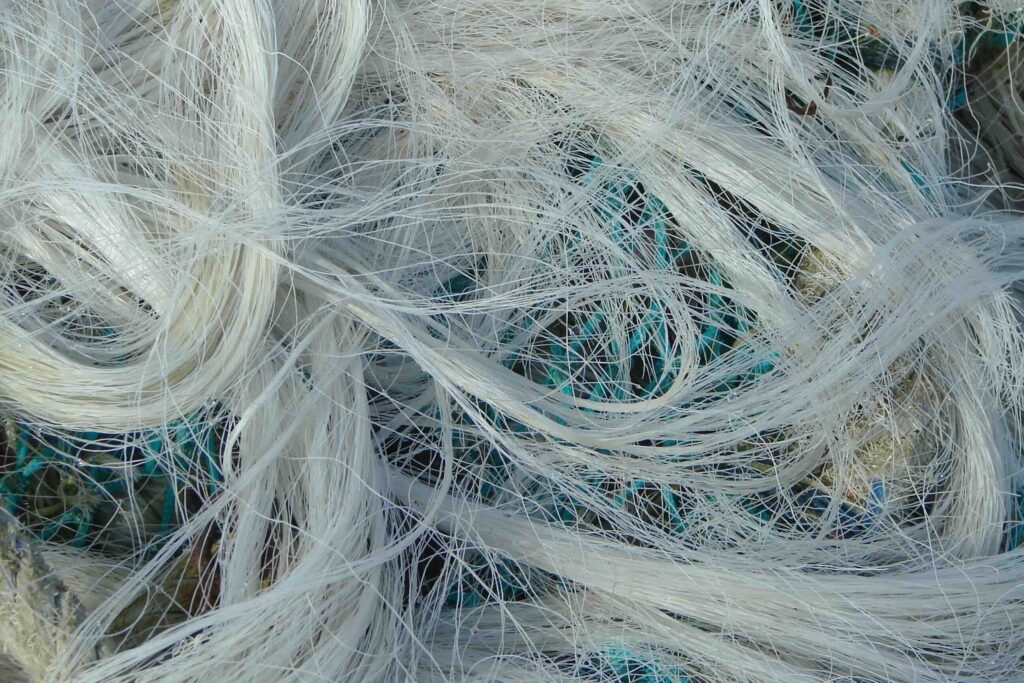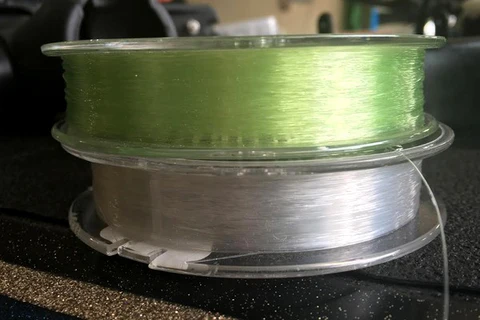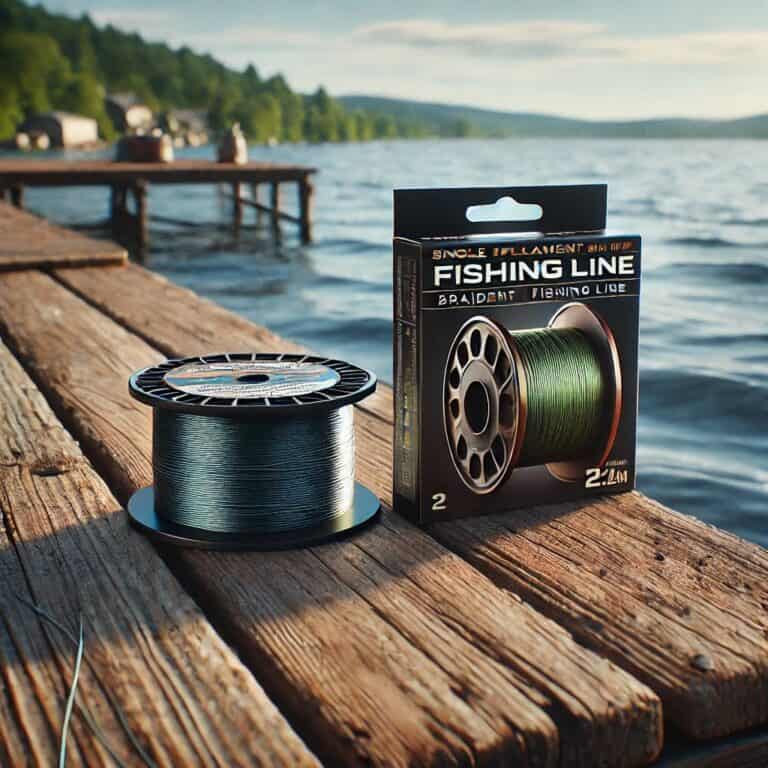Monofilament vs. Fluorocarbon: The Great Fishing Line Debate
When it comes to fishing, the type of line you choose can significantly impact your success.
Two of the most popular options among anglers are monofilament and fluorocarbon.
Both have their unique advantages and applications and choosing between them is a topic of much debate in the fishing community.
In this comprehensive guide, we’ll dive deep into the characteristics, benefits, and best uses of monofilament vs. fluorocarbon lines, helping you decide which is the best fit for your fishing needs.
Understanding Monofilament Line
What is Monofilament?
(image source: Wikipedia)
Monofilament, commonly referred to as mono, is a single strand of nylon or other polymers.
It has been a staple in fishing for decades due to its versatility and ease of use.
Characteristics of Monofilament
- Stretch: Monofilament has a good amount of stretch, which can be beneficial for absorbing shocks and preventing line breakage during aggressive strikes.
- Buoyancy: Mono tends to float, making it suitable for topwater fishing and certain presentations where buoyancy is advantageous.
- Visibility: Monofilament is generally more visible in the water compared to fluorocarbon, which can be a drawback in clear water conditions.
- Knot Strength: It boasts excellent knot strength, ensuring secure connections to hooks, lures, and swivels.
- Flexibility: Mono is relatively soft and flexible, making it easier to handle and cast.
Advantages of Monofilament
- Cost-Effective: Monofilament is typically more affordable than fluorocarbon, making it a great choice for beginners and budget-conscious anglers.
- Ease of Use: Its flexibility and manageable nature make it easy to spool, tie knots, and handle overall.
- Versatility: Mono works well in a variety of fishing scenarios, from freshwater to saltwater and from spinning reels to baitcasting setups.
Disadvantages of Monofilament
- Line Memory: Monofilament can develop line memory, which causes it to retain the coiled shape of the spool, leading to tangles and decreased casting performance.
- Visibility: In clear water, the visibility of monofilament can be a disadvantage, potentially spooking wary fish.
- UV Degradation: Prolonged exposure to sunlight can weaken monofilament over time, necessitating more frequent line changes.
Understanding Fluorocarbon Line
What is Fluorocarbon?
(image source: Hunting and Fishing Depot)
Fluorocarbon line is made from polyvinylidene fluoride (PVDF), which gives it unique properties compared to monofilament.
It is known for its low visibility in water and high abrasion resistance.
Characteristics of Fluorocarbon
- Low Stretch: Fluorocarbon has less stretch than monofilament, providing better sensitivity and hook-setting power.
- Density: It is denser than water, causing it to sink. This makes fluorocarbon ideal for deepwater and bottom fishing.
- Invisibility: One of the most significant advantages of fluorocarbon is its near-invisibility in water, as it closely matches the refractive index of water.
- Abrasion Resistance: Fluorocarbon is highly resistant to abrasion, making it suitable for fishing in heavy cover or rocky areas.
- Stiffness: Fluorocarbon is stiffer than monofilament, which can enhance sensitivity but also makes it harder to manage, especially in lower pound tests.
Advantages of Fluorocarbon
- Low Visibility: Fluorocarbon’s low visibility makes it ideal for clear water and for targeting finicky fish that are line-shy.
- Sensitivity: The reduced stretch translates to increased sensitivity, allowing anglers to detect subtle bites more effectively.
- Durability: Its resistance to UV light and abrasion ensures a longer lifespan compared to monofilament.
- Sinking Quality: For techniques requiring a sinking line, such as jigging or bottom fishing, fluorocarbon is the preferred choice.
Disadvantages of Fluorocarbon
- Cost: Fluorocarbon is generally more expensive than monofilament, which can be a consideration for anglers on a budget.
- Stiffness: The increased stiffness can make it more challenging to handle and more prone to line twist and kinks.
- Knot Tying: Fluorocarbon can be more difficult to knot properly, and improper knots can slip or weaken the line.
Comparing Monofilament and Fluorocarbon
Strength and Durability
While both types of line are strong, fluorocarbon’s increased abrasion resistance and durability give it an edge in harsh fishing environments.
However, monofilament’s flexibility can help prevent breakage under sudden, sharp stress.
Visibility
Fluorocarbon’s low visibility is a major advantage in clear water and for particularly wary species.
Monofilament’s higher visibility can be a drawback in such situations but may not be as significant in murkier waters or when using larger baits.
Handling and Manageability
Monofilament is generally easier to handle, tie knots with, and manage on a reel.
Its flexibility and lower memory make it more user-friendly, especially for beginners.
Fluorocarbon, while stiffer and more prone to memory, offers better sensitivity and low visibility but can be challenging to manage.
Cost
Monofilament is the more economical choice, making it accessible for all anglers.
Fluorocarbon, with its advanced properties, comes at a higher price point, which might be a consideration for those fishing frequently or in demanding conditions.

Best Uses for Monofilament
- Topwater Fishing: The buoyancy of monofilament makes it ideal for topwater lures and presentations where a floating line is beneficial.
- General Purpose Fishing: For anglers looking for a versatile line that can handle a variety of situations, monofilament is a solid choice.
- Beginner Anglers: Its ease of use, knot strength, and affordability make monofilament perfect for those new to fishing.
Best Uses for Fluorocarbon
- Clear Water Fishing: Fluorocarbon’s low visibility is perfect for fishing in clear water where fish are more likely to be spooked by visible lines.
- Deepwater and Bottom Fishing: The sinking quality of fluorocarbon makes it ideal for getting baits down quickly and maintaining contact with the bottom.
- Heavy Cover Fishing: Its abrasion resistance is beneficial when fishing around rocks, docks, and other structures where line damage is a concern.
Combining Monofilament and Fluorocarbon
Many anglers use a combination of both lines to take advantage of the strengths of each.
For example, using a monofilament mainline with a fluorocarbon leader can provide the benefits of both types of line.
The monofilament mainline offers ease of handling and casting, while the fluorocarbon leader provides low visibility and abrasion resistance near the lure or bait.
Knot Recommendations
When using fluorocarbon, it’s crucial to use knots that maintain the line’s strength and prevent slipping. Some recommended knots include:
- Palomar Knot: Known for its strength and reliability, it works well with fluorocarbon.
- Double Uni Knot: Ideal for connecting monofilament to fluorocarbon leaders.
- Improved Clinch Knot: A versatile knot that works with both monofilament and fluorocarbon.
Conclusion: Monofilament vs. Fluorocarbon
Choosing between monofilament and fluorocarbon ultimately depends on your specific fishing needs, conditions, and preferences.
Both lines have their unique advantages and are suited to different situations.
Monofilament is a versatile, cost-effective, and easy-to-use option, ideal for a wide range of fishing scenarios.
Fluorocarbon, with its low visibility, high sensitivity, and durability, is perfect for clear water and challenging conditions.
For many anglers, having both types of line in their arsenal allows them to adapt to various fishing conditions and techniques effectively.
By understanding the strengths and weaknesses of each, you can make an informed decision and enhance your fishing experience.
The thrill of fishing lies in the constant learning and adaptation, and choosing the right line is just one piece of the puzzle.
As always, happy fishing!






